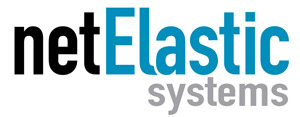The overwhelming growth in internet traffic shows no signs of slowing down. Businesses and individuals are streaming video to their desks, accessing social media networks and feeds, and using cloud-based services – all of which chew up network bandwidth at an accelerating pace, putting pressure on carriers to keep up with increasing demand.
Putting even more demand on bandwidth are increasing customer demands for carriers and service providers to deliver new and advanced services. As customers seek to consolidate providers, carriers must have the capacity to deliver a broad range of services to reduce churn and maintain customer satisfaction.
The BNG Problem
Traditional hardware-based BNGs are very difficult to scale elastically, and thus can’t support the network and subscriber growth that market evolution demands. This lack of scalability means carriers have to purchase more hardware than they need today in order to support network and subscriber growth in the future. Unfortunately, it’s often difficult to recoup these up-front hardware costs since traffic and subscriber revenue can come much later than the initial investment.
Solving Scalability: A New Approach to BNGs
To achieve elastic scalability, a vBNG must first separate the data and control planes so that the data plane can be scaled independently from the control plane. Decoupling of the control and data plane allows for flexible capacity expansion without restrictions from either plane.
Once decoupled from the control plane, the data plane should be optimized to deliver maximum performance on x86 platforms. For example, the data plane should take advantage of Intel network interface cards to deliver a high-performance DPDK, and utilize a design that maximizes performance on multi-CPU hardware. This way, it’s not only taking advantage of cores in an individual CPU but further parallelizing the data plane to scale from CPU to CPU and server to server as demand increases.
netElastic Virtual BNG

netElastic vBNG is designed to deliver unmatched performance and scalability with a highly optimized data plane and patented packet processing techniques. vBNG separates the control plane and data plane, with the control plane running the network operating system on a virtual machine containing a comprehensive suite of network service functions. The data plane runs the packet-forwarding engine, enabling line-rate data transfer.
Both the control plane and data plane can scale up/down to meet performance needs, and they can run in different hosts to take advantage of CPU cores to maximize performance and scalability. The netElastic vBNG data plane can also be expanded across multiple hosts to obtain the performance of dedicated hardware BNGs, while still benefiting from the greater flexibility and lower-costs of a virtualized solution.
netElastic vBNG leverages Intel’s Data Plane Development Kit (DPDK) and Single Root IO Virtualization (SR-IOV) coupled with netElastic optimized code to enhance forwarding performance. vBNG delivers up to 160Gbps throughput on a single server and can be scaled to support multi-terabit services. The data plane can also be scaled-out across multiple servers to increase total bandwidth capacity.
The netElastic vBNG also supports Cisco emulation to eliminate retraining needs, as well as NETCONF and YANG to boost automation and programmability. As for the expected features, support is provided for a broad range of protocols and security policies including IPv4, IPv6, BGP, OSPF, MPLS, L2TP, VxLAN, GRE, IPSec, IPoE, PPPoE, and AAA to name just a few. netElastic vBNG also has built-in CGNAT to eliminate the high cost of add-on or external CGNAT solutions, further reducing TCO.
For more details on how you can benefit from greater network scalability and flexibility, please download the full white paper here.

